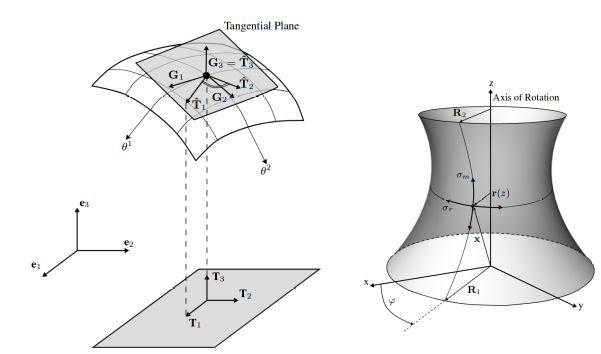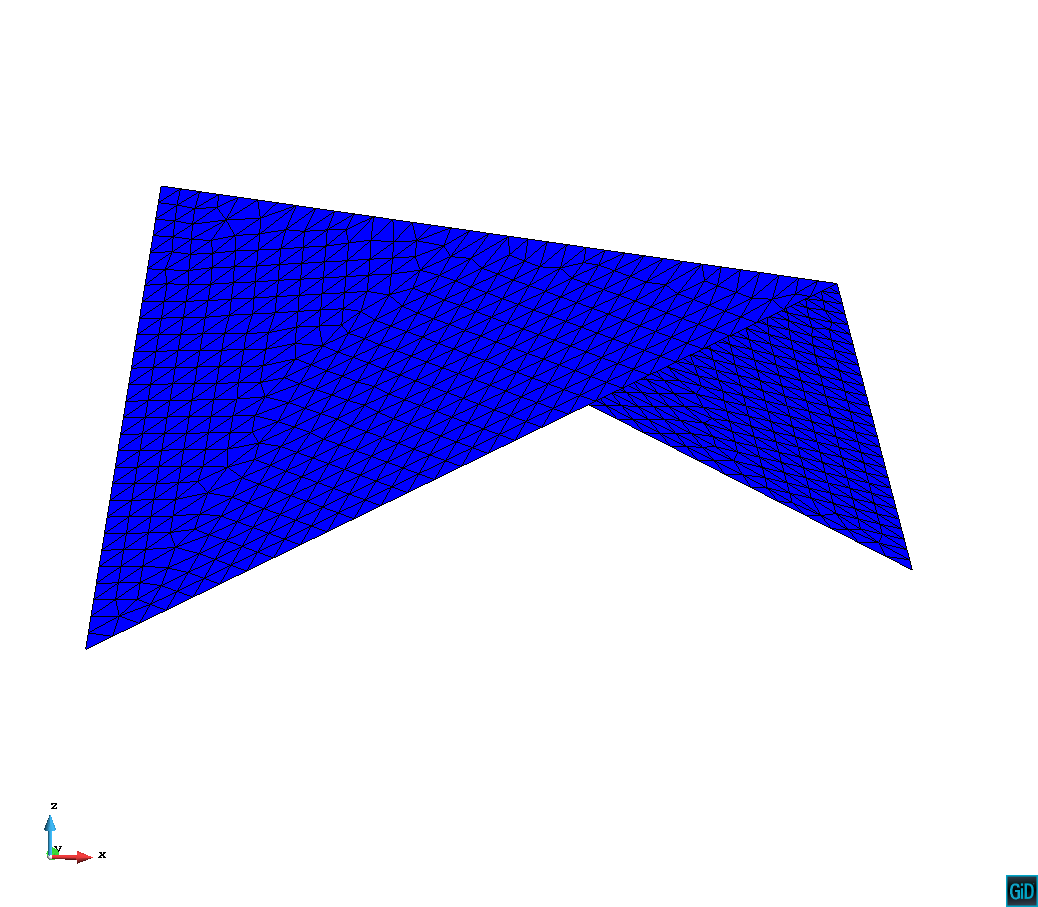This page descibes the simulation of prestressed membranes (isotropic and anisotropic) for analysis and formfinding which is implemented in the StructuralMechanicsApplication. The implentation is based on the following sources:
- Numerical Methods for the Design and Analysis of Tensile Structures, Falko Hartmut Dieringer
- Mechanik und Numerik der Formfindung und Fluid-Struktur-Interaktion von Membrantragwerken, Roland Wüchner
Prestressed Membrane Element
The prestressed membrane element (prestressed_membrane_element.h) is designed in such a way that it is suitable for both formfinding and membrane analysis. The prestress can either be read from a .mdpa file (which could for example result from a formfinding analysis, example see following code)
Begin ElementalData MEMBRANE_PRESTRESS
1 [3,1]((1.0),(1.0),(1.0))
2 [3,1]((2.0),(1.0),(-1.0))
3 [3,1]((3.0),(1.0),(6.0))
4 [3,1]((5.0),(2.0),(1.0))
5 [3,1]((6.0),(3.0),(-5.0))
End ElementalData
or from a projection (planar or rotational, see picture). The prestress, the projection type and the projection direction(s) are defined in the material. In the rotational case the variable PRESTRESS_AXIS_1_GLOBAL defines the axis of rotation. The entries in the PRESTRESS_VECTOR define the components for [“radial prestress”, “tangential prestress”, 0]:
{
"properties" : [{
"Material" : {
"Variables" : {
"PRESTRESS_VECTOR": [6000,5000,0]
"PROJECTION_TYPE_COMBO": "planar"
"PRESTRESS_AXIS_1_GLOBAL: [1 0 0],
"PRESTRESS_AXIS_2_GLOBAL: [0 1 0]
}}}]}
{
"properties" : [{
"Material" : {
"Variables" : {
"PRESTRESS_VECTOR" : [100,0,0],
"PROJECTION_TYPE_COMBO" : "radial",
"PRESTRESS_AXIS_1_GLOBAL" : [0,0,1],
}}}]}

The projection of the prestress is executed by the method ProjectPrestress.
The distinction between formfinding and membrane analysis is set by the value IS_FORMFINDING. If IS_FORMFINDING = True, the update reference strategy is applied where the base vectors are updated in each nonlinear iteration (Method: ComputeBaseVectors). In the case of prestress adaption, the prestress is updated in the method UpdatePrestress.
Formfinding Analysis
The formfinding analysis is executed in `formfinding_updated_reference_strategy.hpp<´. In order to use the formfinding strategy the following parameters have to be included in the parameter input file:
"solver_settings" : {
"solver_type" : "Static",
"echo_level" : 2,
"analysis_type" : "formfinding",
"line_search" : false,
"print_formfinding_iterations" : true
}
In order to use the result of a formfinding analysis for further simulations, the necessary information (whole modelpart or prestress data) can be printed in an output file using the formfinding_io_process. The same process can be used in subsequent simulations to read the prestress data.
"list_other_processes": [
{
"python_module": "formfinding_IO_process",
"kratos_module": "KratosMultiphysics.StructuralMechanicsApplication",
"help": "This process is for input and output of prestress data",
"process_name": "FormfindingIOProcess",
"Parameters": {
"model_part_name": "Structure",
"print_mdpa": true,
"print_prestress": false,
"read_prestress": false
}}]
Formfinding example
The following pictures show an example where the formfinding is executed for a 4-point-sail. Isotropic prestress is applied by a planar projection. The first picture shows the original geometry and the second picture the formfinding result.

